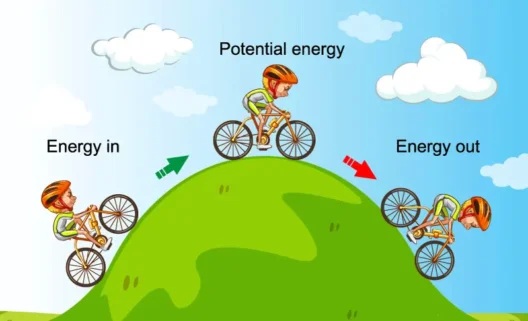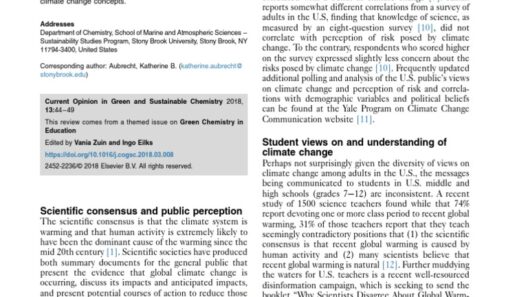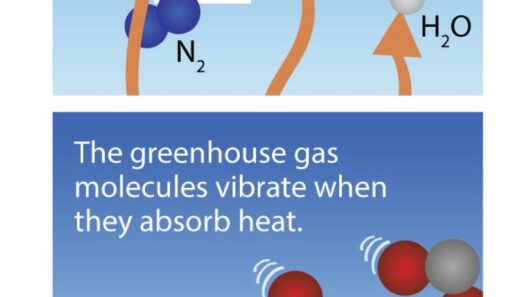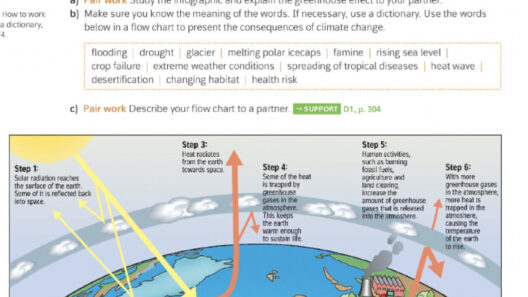The greenhouse effect is a phenomenon that has become increasingly prominent in discussions about climate change, capturing the attention of scientists, activists, and the general public alike. Understanding what causes the greenhouse effect is essential in identifying the major contributors to climate change. A myriad of factors contributes to this complex interplay of natural and anthropogenic processes. This article unravels the intricacies of the greenhouse effect and the driving forces behind it.
At its core, the greenhouse effect is a natural process that warms the Earth’s surface. Solar radiation reaches the planet, and some of this energy is absorbed while the rest is reflected back into space. The absorbed energy is re-radiated in the form of infrared radiation. Greenhouse gases (GHGs) in the atmosphere trap some of this outgoing radiation, leading to a warming effect known as the greenhouse effect. While this process is vital for sustaining life on Earth, human activities have amplified it, leading to dangerous climate changes.
Understanding the causes of the greenhouse effect requires an examination of its key contributors. These can be broadly classified into natural causes and anthropogenic activities, with the latter comprising the majority of contemporary impacts.
Natural Contributors: The Earth’s Own Dynamics
Even in the absence of human intervention, the Earth possesses intrinsic dynamics that contribute to the greenhouse effect. Natural phenomena such as volcanic eruptions release significant volumes of greenhouse gases, particularly carbon dioxide (CO₂) and sulfur dioxide (SO₂). These emissions can lead to temporary temperature increases by enhancing the greenhouse effect.
Another natural contributor is the decomposition of organic matter in wetlands and tundras, which releases methane (CH₄), a potent greenhouse gas that contributes substantially to atmospheric warming. The ocean also plays a dual role: while it absorbs vast amounts of CO₂, it simultaneously releases some back into the atmosphere through physical and biological processes. Understanding these natural processes is crucial as they interact complexly with anthropogenic activities.
Anthropogenic Influences: Human Activities Paving the Path
Despite the existence of natural contributors, it is undeniably human activities that have significantly exacerbated the greenhouse effect over the past century. The industrial revolution marked a pivotal point where fossil fuel combustion began to release massive amounts of carbon dioxide into the atmosphere. Coal, oil, and natural gas burned for electricity, transportation, and heating are primary sources of CO₂ emissions.
Deforestation is another critical anthropogenic factor. Trees absorb CO₂ during photosynthesis, acting as carbon sinks. When forests are cut down for agriculture, urban development, or logging, not only is CO₂ absorption reduced, but the carbon stored in trees is also released into the atmosphere, intensifying the greenhouse effect.
Agricultural Practices: The Silent Contribuitor
Agricultural activities contribute significantly to greenhouse gas emissions. The use of nitrogen-based fertilizers leads to nitrous oxide (N₂O) emissions, a powerful greenhouse gas that can be over 300 times more potent than CO₂ over a century. Livestock farming also generates substantial methane emissions, primarily through enteric fermentation during digestion. This aspect of agriculture exemplifies how feeding the global population can inadvertently contribute to climate change.
Industrial Emissions: The Overlooked Aspect
Industrial activities extend beyond fossil fuel consumption, encompassing processes that release a variety of greenhouse gases. Chemical production, cement manufacturing, and waste management are substantial contributors to emissions. For example, the production of cement requires significant energy and releases CO₂ as a byproduct. Tackling emissions from these industries demands innovative strategies and technologies, highlighting the necessity for a comprehensive approach to mitigate climate change.
Transport: The Global Movement
The transportation sector is another significant contributor to greenhouse gases. Vehicles that rely on fossil fuels emit carbon dioxide and nitrous oxide, with the aviation and maritime industries being notable offenders. As global trade and travel increase, so does the carbon footprint associated with transportation. Transitioning to electric vehicles, enhancing public transport systems, and adopting sustainable aviation technologies will be vital in addressing these emissions.
Energy Production: The Core of the Crisis
The energy sector stands at the heart of greenhouse gas emissions. Fossil fuels, such as coal, oil, and natural gas, are still the primary energy sources worldwide. Transitioning to renewable energy sources like solar, wind, and hydroelectric power is essential for significantly reducing emissions. However, the implementation of such technologies requires political will, infrastructural investment, and public mandate to shift away from a fossil fuel-dependent framework.
Challenges and Opportunities: Navigating Forward
Identifying and understanding the major contributors to the greenhouse effect and climate change provides us with a roadmap toward solutions. However, recognizing challenges is equally important. Economic complexities, political barriers, and social dynamics create a multifaceted landscape when addressing climate change. Nevertheless, these challenges present opportunities to innovate and evolve green technologies, develop sustainable practices, and foster global cooperation.
Ultimately, the greenhouse effect, while a natural phenomenon, has been drastically amplified by human actions. By comprehensively addressing the various contributors—from natural processes to human endeavors—we can work towards a more sustainable future. Understanding these dynamics not only informs policy decisions but also empowers individuals to contribute to solutions that mitigate climate change and protect our planet for future generations.







